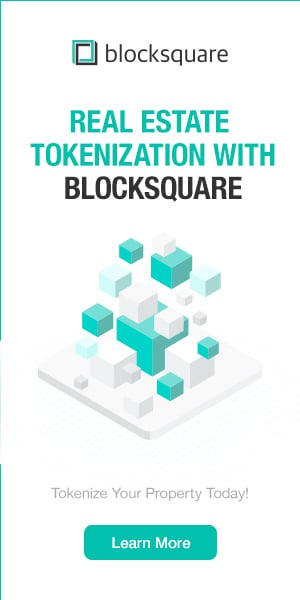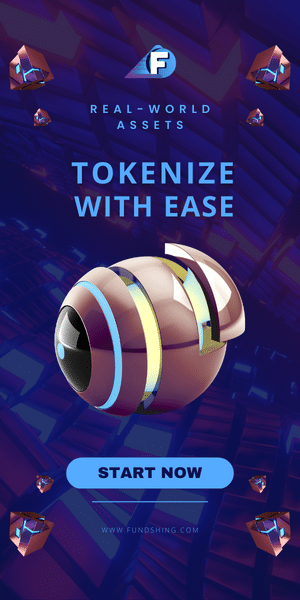Being an art enthusiast for many years (and a collector too on a tiny scale) you might think that tokenization of art would be right down my alley. But even though I am genuinely excited about the potential of anything related to tokenization – that is why we are establishing The Tokenizer! – I am struggling to make up my mind when it comes to the combination of art and tokenization. Does it make sense? Is it supporting or a little bit undermining the art community? And how could tokenization within the art world be developed further besides just offering fractional ownership of single tier-one artworks?
In the coming months, we will dig deeper into this area in a line of articles and interviews with some of the new companies specialising in art tokenization. But right now, in this opinion piece, I will start by trying to express and explain my preliminary views of the matter. It is going to be interesting – at least for myself – to see if these views will change as we study the subject of art in combination with tokenization further going forward.
The industry of tokenization is still very much under construction, and it is highly likely that the way things are currently being done, the methods we are developing right now, and the areas that we are focusing on in this early phase will develop much further and in some case change radically. For that reason alone, it is not fair to review the topic of art and tokenization as if it had been around for decades. It is still only in its infancy, but nevertheless, the companies who are already offering services within this area seem – so far – to agree that tokenization within the art world equals buying selected pieces of tier-one artworks, tokenizing them and offering fractional ownership in the shape of security tokens.
What this means is that thousands of people in the world can be co-owners of an expensive piece of art by paying in some cases as little as USD 20 – or 200 or 2,000, depending on how many shares of the artwork they would like to buy. At some point (we are not quite there yet) these art-tokens will be tradeable on security token exchanges, and as an owner, you can choose to hold them and hope that the artwork backing your tokens becomes more valuable, or you can sell them on the market whenever you want.
It is not that I object to the idea of enabling more people to obtain ownership of a piece of art. On the contrary, I genuinely like the idea of sharing and democratising the opportunity of investments – but in this particular case, I find it hard to feel the excitement.
The reason for my instinctive objection is that art is so much more than just the investment aspect of it. Art itself is about opening up new worlds, adding new perspectives to things and asking challenging and surprising questions. Collecting art is like an entrance ticket to the minds of the artists you collect and follow, but it is also an entrance ticket to a global community of art, artists and art lovers. For many of the most enthusiastic collectors, their passion almost becomes like a virus, and once they have been infected, the art virus tends to catch on, and many become incredibly passionate. A well-known Danish art collector and businessman once said to my wife, a curator, when they met at the Basel Art Fair and she asked if he had found any works that he liked: “Yes, several! I can’t help it. If I could only get a pill against this art collecting virus.”
But of course, there is no cure for (art) love, and just as well! Passionate collectors like this businessman are important for the art community because their way of collecting creates a financial foundation for young and upcoming artists (and their galleries) who would otherwise find it difficult economically to do what they do best. This type of collector spends almost all their spare time studying art, visiting artists in their studios, talking to galleries and travelling to international art fairs. What they are looking for is not conservative and relative safe bets like buying a Warhol or a Rothko, but much more to integrate with artist communities, learn from them, live with them and – of course – buy their works and hope to find the best unpolished diamonds that at some point in the future increase insanely in value.
This collector – the businessman – bought Damien Hirst for instance at a very early stage, long before his works became expensive. And one of his Danish collector colleagues/competitors bought Peter Doig (among many other high-quality artists) years before his works went for millions of euros at international auctions. These are the kind of collectors that positively fit into the art ecosystem, support it and help develop the global art community.
Another type of art collector (or art investor) is the one whose primary qualification is money. If you have an unlimited budget, collecting art for an investment purpose is not that difficult. The art market is full of paradoxes, and one of them is the very primitive rule of thumb that you should go for the most expensive artworks if you want to be (relatively) sure not to lose your money and perhaps even make a profit. Buying quality works (not leftovers) by Picasso, Francis Bacon or Rothko is not much of a science, it just takes a lot of money. The most challenging part is to get access to the right works, but very wealthy people with little knowledge about art who want to play this game are likely to hire an art consultant to help them open the right doors and find the relevant artworks – sometimes from galleries, sometimes at auctions. It is doubtful that this type of art investors benefit the art, the artists and the art world – except for the big auctions houses and an exclusive group of top gallerists and art dealers.
For this group of Ultra-High Net-Worth Individuals (UHNWI) buying and collecting art is probably not as much about the investment aspect as you might think. Other more intangible aspects like demonstrating financial and societal power (to yourself, your network or the public) by proving that you are in fact able to pay tens of millions of euros for an object with no practical value, undoubtedly plays an important part.
Obviously, the picture is not just black and white, and the different types of collectors/investors, as well as reasons and motives, are far more mixed than described here. In addition, there is a large group of more ordinary people who occasionally buy a piece of art to hang in the living room, but avoid getting infected by the aforementioned virus. The point is that buying art is often – fortunately – about much more than just the economic part of it.
Now, the question is how this relates to the tokenization of art? Take for instance the art tokenization company Masterworks.io that offers investors to buy a piece of a Warhol painting in the form of a security token for USD 1,000. Are these security tokens an attractive investment from a purely financial perspective? Does investing in these security tokens do anything to support the ecosystem of the art world? And does investment in these security tokens give you, as an investor, anything which investing in, for instance, a real estate security token does not? Or in other words: Why chose to buy a Warhol art token instead of any other security token? I hope to be able – in a later interview – to ask Masterworks and other tokenization companies specialized in this area these questions, and I suppose they will have some very reasonable answers.
Until then you will have to do with my immediate comments, and I would suggest that according to my own rule of thumb, as mentioned above, investing in a quality work by Warhol is probably not a very bad investment – he is after all one of the most important artists of the 20th century, and his works are represented in museums all over the world. But whether it is a good investment is still extremely difficult to predict, let alone the fact that the art market is relatively unregulated and that the Warhol market is known for being one of the more manipulated artist markets in the art world. It is a public secret that the New York-based Mugrabi family owns as many as 1,000 Warhol works which for years has allowed them in practice to influence the Warhol prices significantly by continually buying and selling works on the auctions and through selected dealers. But is a market controlled in no small degree by one family, known for routine manipulation activities, a healthy market? I seriously doubt that.
Furthermore, I must admit that I find it a little difficult to see that investing in a privately held Warhol that is not part of a collection and is not meant for public display does anything good for the art world. It doesn’t benefit the art ecosystem or supports any living artists or galleries or art institutions like the museums. It is strictly a case of financial investment and the fact that the underlying asset is a painting and not a building or barrels of oil or company shares doesn’t make any difference. Some may argue that if you are investing in Warhol security tokens and not in tokens backed by oil you might be encouraged to start engaging with art and the art world. But so far, there is no evidence that this is the case and it is not clear to me why we would ever see such a connection.
Masterworks’ key argument for investing in art tokens is that “since 2000, ‘blue-chip’ artwork has outperformed the S&P 500 by over 250% according to Artprice.” That might be correct if we believe in the calculations of Artprice – though I am not suggesting that they are incorrect – and if we dare to trust a to some extent manipulated art market. I will stand by my rule of thumb and say that you indeed increase your chances of making a good investment if you are buying the very best and in many cases most expensive works on the market, but even then, investing in art is still a high-risk investment.
When it comes to tokenization of art and fractional ownership and democratising of art investments, I acknowledge that it might be a good investment from a financial perspective, but there are indeed no guarantees. Aside from that, I find it difficult to understand why it would be attractive to own a piece of a Warhol painting if I have no physical access to the work, if I cannot hang it in my apartment and enjoy living together with it.
That said, there might be some interesting ways of further innovating the use cases within the area of art and tokenization. And The Tokenizer wants to dig deeper into this in the next articles of this series. Some of the many questions that we would like to shed some light on are:
Could one imagine that in the future museums would have the opportunity to take advantage of tokenization? In today’s art market it is often tough for public museums to find the necessary funds for buying top-quality works for their collections, and the question is whether tokenization could be a possible way forward for such museums? In many countries this would currently not be possible, simply because public museums for instance in Denmark are not allowed to sell a work once they have acquired it, but who knows if a collaboration between an art tokenization company and a museum could result in some creative and mutually beneficial solution?
Furthermore, how about utilising tokenization for financial support of galleries, of art events and art fairs? We will take a closer look at different possible models for this in a separate article.
Finally, would it be possible to develop a model for tokenization of not just artworks, but of an actual artist and his or her carrier? Could that be a likely future way of supporting – upcoming – artists?[1]
We will consider these questions in later articles.
Some af the art tokenization platforms are:
[1] In fact, what David Bowie did already in 1997 when he issued the asset-
The painting illustrating this article: Paul Gauguin, Portrait of a young girl, 1896, Ordrupgaard, Copenhagen.
More Articles:
Harbor Launches First Institutional-Grade Platform for Tokenizing Private Securities
eToro: What is tokenization and what are the different types of tokens available?
















